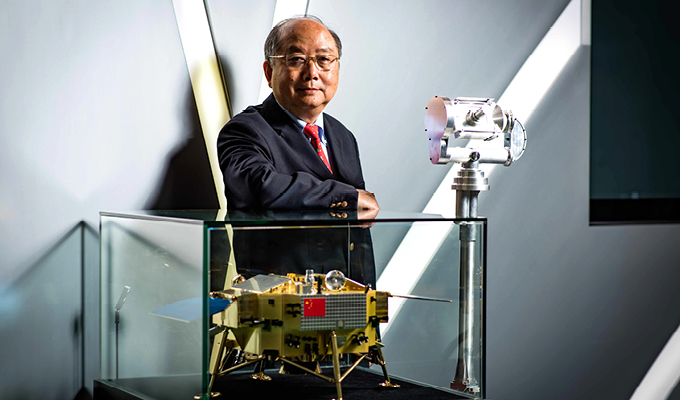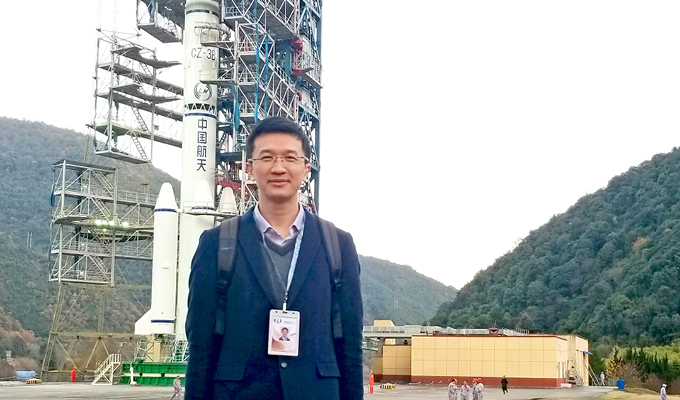

PolyU experts have long been contributing to the nation’s space exploration programmes, including the current Chang’e-4 lunar probe – the world’s first mission to land on the far side of the Moon.
Funded by the China Academy of Space Technology (CAST), Dr Wu Bo of the Department of Land Surveying and Geo-Informatics led a research team to create high-precision and high-resolution topographic models of the potential landing region for the Chang'e-4. The team also analysed in detail the terrain slopes, terrain occlusions to sun illumination and telecommunication, crater distribution, rock abundances, and geological history of the region. These analyses helped put forward a sound and evidenced-based proposal of the possible landing sites.
Prof. Yung Kai-leung of the Department of Industrial and Systems Engineering and his team also participated in this historical mission by jointly developing the Camera Pointing System with CAST. Mounted on the upper part of the lander of Chang'e-4, the system is deployed for capturing images of the moon and facilitating movement of the lunar rover. Details>>